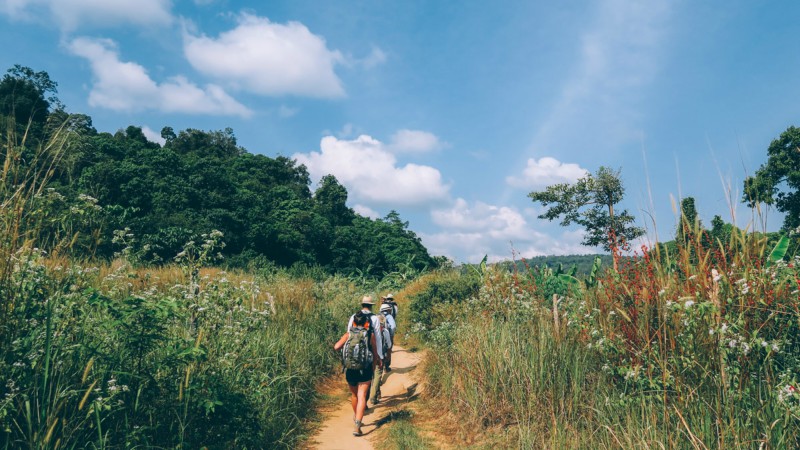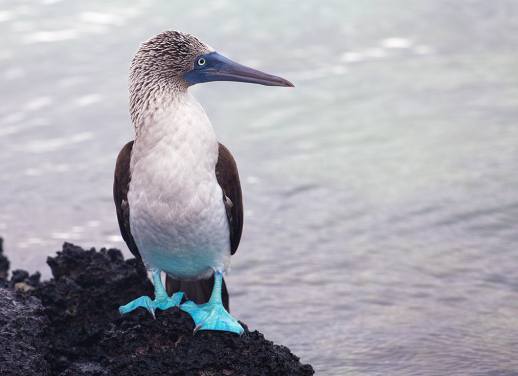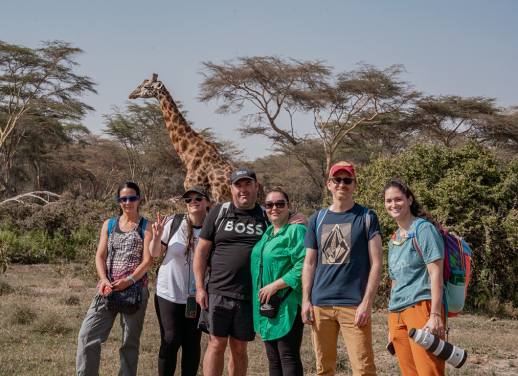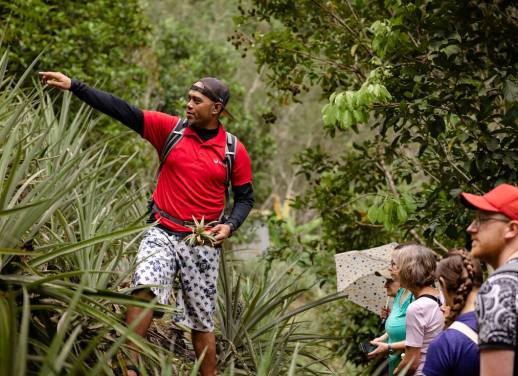Our guide, Leeheng, stops abruptly, holding up a hand for quiet.
The rest of our hiking group piles up behind me, tripping over each other as the sudden halt takes us all by surprise. We begin to giggle until the seriousness of Leeheng’s face quickly hushes us.
Standing in the middle of the trail, he’s listening intently to the sounds of the steamy Cambodian jungle around us. A monkey gibbers away in the trees nearby and the ever-present hum of tropical insects is relentless.
I’m just about to slap a thirsty mosquito away from my already-mauled arms when I hear something else too. In the distance, faintly perceptible, like the crack and shuffle of undergrowth being trampled.
Leeheng whips around. “Elephants,” he whispers urgently, “200 metres.”
BOOK NOW: SPOT THE ELEPHANTS OF CHI PHAT ON THIS 14-DAY CAMBODIAN EXPLORATION
Excitement ripples through our group. It’s the final morning of our 3-day hike through the jungle-clad Cardamom Mountain range in south-west Cambodia, and we’ve all been hoping to have an elephant encounter beyond stepping over their enormous droppings on the trail. After all, this one of the last remaining wild elephant corridors in Asia and witnessing one in its natural habitat is at the top of all our bucket lists.
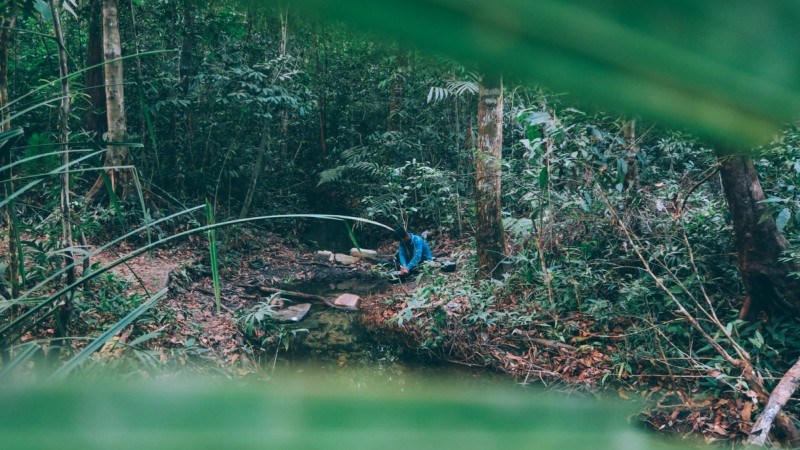
Photo captured by The Common Wanderer
Days earlier, as our group of eight (three Italians, two Australians, and our three Cambodian guides) had sprawled out on a peaceful grassy plateau – sweat-drenched and out of breath after scrambling up a steep jungle incline. Leeheng had waved an arm across the outstretched plain and announced that the elephants were finally returning.
“Few years ago, none here. They got scared by the hunting and the guns and moved away, to Thailand. Now, they come back again.” His smile had been enthusiastic and proud. Understandably so; only two decades prior, this plain had been a battlefield, then a hunting ground.
READ MORE: THE IMPORTANCE OF VISITING CAMBODIA’S KILLING FIELDS
When Pol Pot’s murderous regime collapsed in 1979, his loyal guerrillas literally fled for the hills – retreating to the thick cover of the Cardamom Mountains. For 15 years, they brought chaos to the local communities, like Leeheng’s village of Chi Phat. Landmines were laid, grisly battles fought, and many villagers killed. It left many with little option but to enter the rampant and lucrative poaching and logging trades to survive.
In 2007 the US-based conservation NGO, Wildlife Alliance, approached village elders with an idea: to protect the Cardamom Mountains’ rich flora and fauna (including leopards, elephants, gibbons and the highly endangered pangolin) from hunting, and develop a community-based ecotourism project with Chi Phat at its heart.
DISCOVER THE ECO-TOURISM PROJECTS WE SUPPORT THROUGH OUR FOUNDATION
Villagers like Leeheng became wildlife conservation warriors, leading cycling, kayaking, and trekking tours, training as cooks, or opening guesthouses. Transforming the Cardamom range and the lives of its residents completely.

Photo captured by The Common Wanderer
As we’d scoffed down our dinner the previous night, a mouth-watering curry of forest root vegetables, Leeheng had opened up about his experiences poaching, and how life had changed since. Hunting a deer back then would have meant $100 USD for his family, he’d said, but today, he only cares about protecting them.
“If I bring people here now and they don’t see any animals, I’m sad. When travellers see lots of animals, they’ll tell their friends and encourage others to visit. Our community could earn $10,000, maybe $20,000 USD from tourism instead.”
TUCK IN: SAMPLE THE DELIGHTS OF CAMBODIAN CUISINE ON THIS REAL FOOD ADVENTURE
To those travellers, like my hiking buddies and I, Chi Phat offers the promise of an intrepid adventure totally different to the usual Cambodian backpacker trail highlights. Just getting here was an adventure; a 4-hour bus ride from Phnom Penh followed by a 40-minute motorbike ride through fields. But while others jostled for front-row sunrise positions at Angkor Wat, we’d woken up in our hammocks to first light peeking through the tree canopy.
During the day, we broke open tamarind pods to taste their sticky sweetness, drank water from vines, learnt to track animals, and dove under refreshing waterfalls to cool off from the tropical sun. At night, as backpacker bars pumped out dance music at beach parties in other parts of Cambodia, we’d swapped stories about our families and lives by the campfire and fallen asleep to the sound of the wild jungle.
SUBSCRIBE TO OUR NEWSLETTER FOR NEWS, OFFERS, GIVEAWAYS AND MORE
After a month of following the standard backpacker route in Cambodia, it was exactly the kind of authentic and offbeat adventure I’d craved. So, to be standing in the middle of the trail right now, listening to the sounds of elephants grazing nearby, it feels as though our experience is complete. Leeheng doesn’t quite share our enthusiasm, reminding us with the calm patience of a school teacher that these are wild elephants. As in, not the kind you want to run into on a hiking path while you’re on foot. Walk quickly and silently until it’s safe, he instructs.
“If you see the elephant, drop your bag and run. Run fast. Elephants don’t turn easily, so find the biggest tree and run around it. Then run to the next and do the same. If you get lost, get to the river and walk downstream. Don’t worry, we find you.”
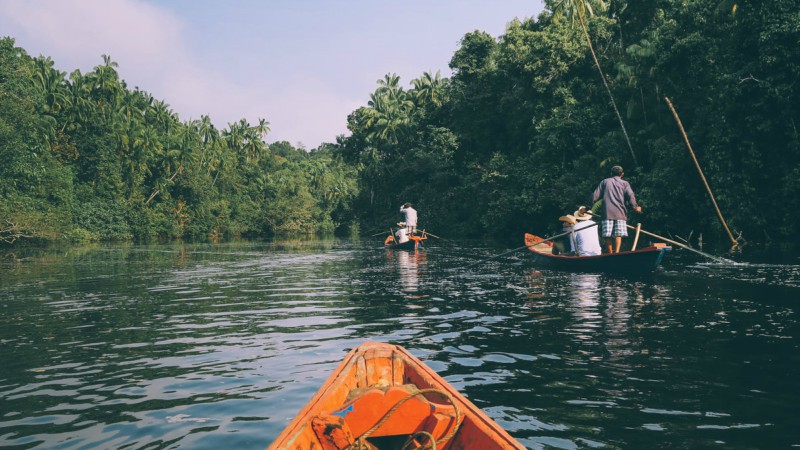
Photo captured by The Common Wanderer
As we begin to move stealthily along the path, Leeheng pulls a small axe from the side of his bag and swings the back of it hard against a tree; a gunshot-like sound ringing out through the forest. The elephants might be returning, but they haven’t forgotten the days when bullets used to land amongst their herd, and Leeheng knows their fear of the sound will keep them well away from us.
Under his watchful eye, we manage to escape any face-to-face meetings with our wild friends – though they do get within 100m at one point – and eventually, we traipse back into Chi Phat a few hours later, elated and buzzing with adrenaline.
READ MORE: 22 PHOTOS OF AN EPIC CAMBODIAN TRIP WITH INTREPID
The group is unanimous: if our mildly close encounter is the price of Chi Phat thriving and the Wildlife Alliance achieving their goals of protecting the area’s elephant population, we’ll happily take it. And sitting on the stilted wooden floor of homestay family’s house later we agree: long after we’ve returned home, this adventure through the Cardamom Mountains and its communities is the Cambodia we’ll always remember.
Explore the secluded Cardamom Mountains for yourself and see the elephants of Chi Phat on our Temples & Beaches tour of Cambodia.

